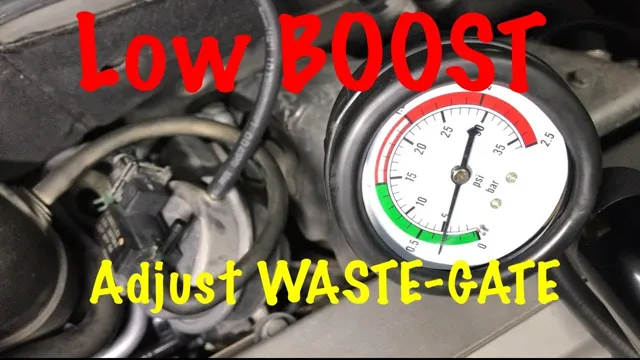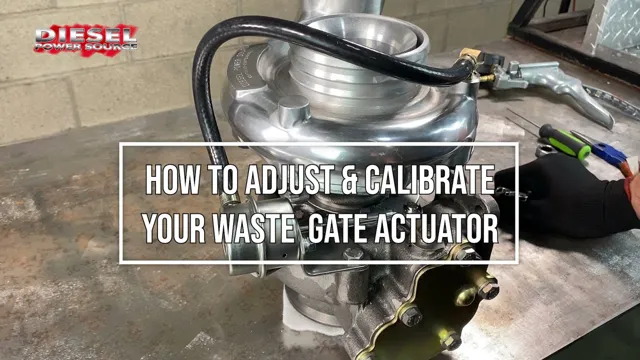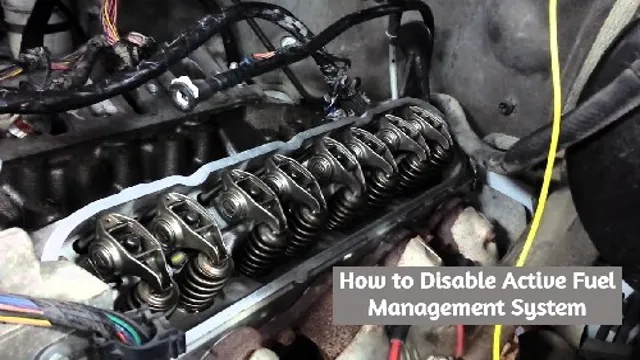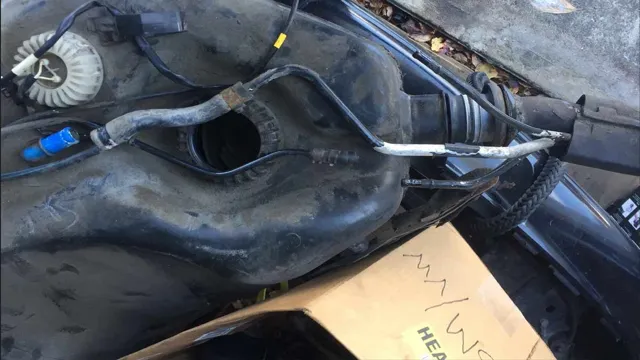Maximize Your Boost: A Step-by-Step Guide on How to Adjust Your Turbo Actuator for Peak Performance
Are you looking to give your turbocharger an extra boost? Then adjusting the turbo actuator could be the solution you’ve been seeking. By increasing the amount of boost pressure generated by the turbocharger, you can significantly improve the engine’s power output and performance. But what is a turbo actuator, and how does it work? Put simply, the turbo actuator is a component that controls the boost pressure generated by the turbocharger.
By adjusting the actuator’s setting, you can increase or decrease the amount of boost pressure delivered to the engine. This results in a more robust and powerful engine, which is especially useful for high-performance vehicles or those used for towing heavy loads. Now, why would you need to adjust the turbo actuator? Well, turbochargers are typically set to deliver a specific amount of boost pressure during factory calibration.
However, altering the setting can result in a more responsive and powerful engine that better suits your driving style. Adjusting the actuator is also an effective way to compensate for engine modifications that may require more boost pressure to achieve optimal performance. But before you reach for your toolbox, it’s important to note that adjusting the turbo actuator requires specific knowledge and experience.
An incorrect adjustment can result in engine damage, reduced fuel efficiency, or other issues. Therefore, it’s best to consult a mechanic or engine performance specialist who can help you determine the correct setting for your specific vehicle and modifications. In conclusion, adjusting the turbo actuator can be an effective way to improve your engine’s performance.
Still, it’s crucial to do so carefully and under expert supervision to avoid any negative consequences. With the right adjustments, you can enjoy a more powerful and dynamic driving experience.
Understanding Turbo Actuators
Turbo actuators play a vital role in the performance of a turbocharged engine. To adjust the turbo actuator for more boost, you need to understand the actuator’s mechanism and the turbocharger’s operation. A turbo actuator is essentially a small motor that controls the wastegate valve.
The wastegate valve helps regulate the boost pressure produced by the turbocharger. By increasing the actuator’s spring tension, you can increase the boost pressure produced by the turbocharger. However, it is crucial to adjust the actuator correctly to avoid overboosting, which can cause engine damage.
It is recommended to consult a professional mechanic with experience in turbocharged engines to ensure the actuator is adjusted safely and properly. By adjusting the turbo actuator for more boost, you can improve the engine’s performance and gain more horsepower. However, it is essential to note that this modification may require additional upgrades to the engine’s supporting components, such as the fuel system and the cooling system, to ensure reliability and longevity.
What is a Turbo Actuator?
A turbo actuator is a critical component of a turbocharged engine that controls the turbocharger’s boost output. In simple terms, a turbo actuator controls the amount of air that enters the engine by regulating the turbocharger’s turbine speed. It’s essentially a small motor that opens and closes the mechanism that controls the flow of exhaust gases into the turbine.
With a properly functioning turbo actuator, the turbocharger can deliver maximum boost pressure, which results in more power and better overall performance. It’s important to keep the turbo actuator in good condition since it can wear out over time due to heavy usage and exposure to high temperatures. Regular maintenance and inspection can help prevent costly repairs and ensure that the engine produces its maximum power output.

The Science Behind Turbo Actuators
How Turbochargers Work
To understand the importance of turbo actuators, it’s essential to first grasp how turbochargers work. A turbocharger uses exhaust gas to spin a turbine, which in turn compresses incoming air and forces more of it into the engine’s cylinders. This results in increased power output from the engine, giving your car that extra oomph.
Role of Actuators in Turbocharger Systems
The actuator is responsible for managing the turbocharger’s wastegate, a valve that directs excess exhaust gases away from the turbine wheel. By doing so, it prevents the turbocharger from generating too much boost pressure, which could otherwise damage the engine. In essence, the actuator ensures that the turbocharger operates within safe and efficient parameters.
How Does a Turbo Actuator Work?
If you own a turbocharged engine, then understanding how a turbo actuator works could help you keep your vehicle running smoothly. A turbo actuator is an essential component that regulates turbocharger boost pressure and controls the amount of exhaust gas flowing through the turbine. It consists of an actuator rod and a diaphragm that reacts to changes in engine pressure and opens or closes the wastegate valve on the turbocharger.
Essentially, the turbo actuator ensures that the turbocharger doesn’t spin too fast and cause damage to the engine or spin too slow and limit performance. By controlling the wastegate valve, the turbo actuator helps maintain optimal boost pressure and engine efficiency, resulting in more power and fuel savings. So, if your turbocharger isn’t working correctly, it could be due to a faulty turbo actuator.
Having it checked and replaced if necessary can prevent costly engine damage and keep your vehicle running smoothly.
Identifying Issues with Boost Pressure
If you’re experiencing issues with your boost pressure, one possible solution is to adjust your turbo actuator for more boost. Boost pressure issues can manifest in a variety of ways, from a lack of power to engine misfires. Checking your boost pressure levels with a boost gauge is the first step to identify if this is the cause of your troubles.
Once you have determined that your boost pressure is low, adjusting the actuator can be a straightforward way to increase it. The actuator is responsible for regulating the turbo and controlling the boost pressure. By adjusting the actuator, you can change the tension on the wastegate and allow for more pressure to build up.
It’s important to note that adjusting the actuator can be a delicate process and should be done carefully to avoid overpressure or excessive strain on the turbo. It’s always best to consult with a professional mechanic or turbo specialist to ensure the job is done properly.
Symptoms of Low Boost Pressure
Low boost pressure can be caused by a number of issues with your vehicle’s turbocharging system. The symptoms of low boost pressure include decreased engine performance, slow acceleration, and reduced fuel efficiency. One common problem is a damaged or worn turbocharger, which can cause lower levels of boost pressure.
Another issue may be a faulty wastegate or diverter valve, which regulate the amount of pressure being sent to the engine. It’s important to identify these problems early on, as they can cause serious damage to your engine if left unchecked. If you notice any of these symptoms, it’s best to take your vehicle to a qualified mechanic to diagnose and repair the issue.
Regular maintenance can also help prevent low boost pressure and keep your vehicle running smoothly.
Common Causes of Low Boost Pressure
Boost Pressure Identifying issues with low boost pressure can be a difficult task but it’s important to address to prevent further damage. One common cause of low boost pressure is a damaged or worn turbocharger. This can be due to issues with oil pressure, overheating of the turbocharging system, or simply age.
Another potential issue is a faulty waste-gate, which regulates the amount of exhaust gas that flows into the turbocharger. If the waste-gate is stuck open or closed, it can cause a drop in boost pressure. A malfunctioning boost controller can also result in low boost pressure, as it regulates the amount of air that flows into the engine.
Finally, leaks anywhere in the system, including the intercooler and its hoses, can cause a drop in boost pressure. It’s important to thoroughly inspect all of these components to determine the cause of low boost pressure and take the necessary steps to repair or replace any damaged parts.
Why Adjust the Turbo Actuator?
Adjusting the turbo actuator can be a crucial step in maintaining the optimum performance of your car’s engine. But why exactly would you need to make such an adjustment? One of the main reasons is to address issues with boost pressure. Boost pressure is the amount of pressure produced by the turbocharger to force air into the engine.
If there are issues with the turbo actuator, this can result in low or inconsistent boost pressure, which in turn can lead to poor engine performance or even damage. By adjusting the turbo actuator, you can ensure that the boost pressure is at the correct level for optimal engine performance. So if you notice any issues with acceleration or power, or if you hear strange sounds coming from the turbocharger, it may be time to consider adjusting the turbo actuator.
With the right adjustments, your engine can run smoothly and produce the power you need to drive safely and efficiently on the road.
Adjusting the Turbo Actuator
If you’re looking to get more boost out of your turbocharger, adjusting the turbo actuator is a great place to start. The turbo actuator is responsible for controlling the amount of boost that the turbocharger produces, so adjusting it can help you achieve the desired level of performance. To adjust the turbo actuator, you’ll need to first locate it on your vehicle’s turbocharger.
Depending on the make and model, it may be located on the wastegate or attached directly to the turbocharger. Once you’ve located it, you can adjust the actuator’s rod to increase or decrease the amount of boost that’s produced. Keep in mind that adjusting the turbo actuator beyond what the turbocharger is designed to handle can cause damage, so be sure to do your research and proceed with caution.
With the right adjustments, though, you can get more power and performance out of your turbocharged vehicle.
Tools Required for the Job
Adjusting the turbo actuator can be a tedious task, especially if you lack the required tools. To do it right, you need a few essential tools like a set of wrenches, pliers, and a screwdriver. The wrenches come in handy when it comes to loosening or tightening the bolts on the actuator.
Pliers are ideal for holding and turning nuts, while the screwdriver is essential when you want to adjust the potentiometer’s position. All these tools are readily available at your local car parts store, and with a little bit of research, you can acquire top-quality tools that will serve you for years. It’s crucial to have the right tools when adjusting the turbo actuator to avoid any damages that could otherwise occur if you use the wrong tools.
With the right tools and some basic mechanical skills, adjusting the actuator will be a breeze, and you’ll get your car performing at its best.
Step-by-Step Guide to Adjusting the Turbo Actuator
Adjusting the turbo actuator can vastly improve the performance of your vehicle. Here’s a step-by-step guide on how to do this. Firstly, you need to identify the location of the actuator.
You can find this by examining the turbo and tracing the wastegate actuator down to the turbocharger. Once you have identified the actuator, remove it and locate the rod that connects to the wastegate and the actuator. Make sure to loosen the lock nut and turn the actuator rod until you achieve your desired boost pressure.
Tighten the lock nut to secure the actuator after you have made the proper adjustments. Start the engine and examine the boost pressure. If it is within your desired range, congratulations! If not, repeat the process until you achieve your desired outcome.
Adjusting your turbo actuator can be a difficult task, so if you’re unsure, consult a professional mechanic for help.
Test Driving and Monitoring Boost Pressure
If you’re wondering how to adjust a turbo actuator for more boost, it’s important to start with a test drive and monitor the boost pressure. Take note of how the car accelerates and when the turbo kicks in. If the boost pressure isn’t where you want it to be, you may need to adjust the actuator.
To do this, you’ll need to locate the actuator and determine which way to turn the rod to increase or decrease the boost pressure. This might require some trial and error, but it’s important to be patient and safe. Once you’ve made the adjustment, take the car for another test drive and monitor the boost pressure again.
Repeat this process until you achieve the desired boost pressure. Just remember to always take precautions when adjusting the actuator and to regularly monitor the boost pressure to avoid causing any damage to the engine. With a little patience and attention to detail, you can optimize your turbo and enjoy a more powerful driving experience.
How to Test Drive Your Vehicle After Adjustments
After you’ve made some adjustments to your vehicle, it’s important to take it for a test drive to ensure everything is running smoothly. One aspect to pay particular attention to is your vehicle’s boost pressure. Boost pressure is critical to your engine’s performance, as it helps to increase the power output of your engine.
You can monitor your boost pressure through a boost gauge, which can help you identify any issues with your engine’s performance. During your test drive, you should keep an eye on your boost pressure and ensure that it’s not exceeding safe levels. If it is, you might need to adjust your boost pressure to ensure your engine is running efficiently and safely.
So, before you hit the road after making any adjustments to your vehicle, make sure to keep an eye on your boost pressure and ensure that your engine is performing optimally.
Monitoring Boost Pressure After Adjustment
If you’ve recently made an adjustment to your vehicle’s boost pressure, it’s important to take it for a test drive and monitor the pressure levels. This way, you can ensure that everything is running smoothly and that you’re not causing any damage to your engine. During the test drive, pay close attention to how your vehicle handles and make note of any changes in acceleration or overall performance.
Additionally, use a boost pressure gauge to monitor the pressure levels and make sure they’re consistent with your desired settings. Remember that every vehicle is different, so it’s important to know which adjustments are safe for your specific make and model. By taking the time to test drive and monitor your boost pressure, you can keep your engine running smoothly and extend the life of your vehicle.
Common Turbo Actuator Problems
Overboost and Underboost Issues
One of the most common issues with turbo actuators is either overboost or underboost. Overboost occurs when the actuator fails to open the wastegate valve, causing excessive pressure to build up. Conversely, underboost happens when the actuator doesn’t close the valve properly, leading to insufficient boost pressure. Both conditions can severely impact your vehicle’s performance and even cause engine damage.
Actuator Failure Causes and Symptoms
Actuator failure can result from various factors, including wear and tear, corrosion, and electrical issues. Symptoms of a failing actuator include a loss of power, unusual noises from the turbocharger, and a check engine light. If you notice any of these signs, it’s crucial to diagnose and fix the problem promptly to avoid further complications.
Diagnosing Turbo Actuator Issues
Using OBD Scanners and Diagnostic Tools
Diagnosing turbo actuator issues can be daunting, but modern diagnostic tools make the job much easier. OBD (On-Board Diagnostics) scanners can read trouble codes from your vehicle’s computer, helping you pinpoint the problem. These scanners are invaluable for both DIY enthusiasts and professional mechanics.
Step-by-Step Guide for DIY Diagnosis
- Connect the OBD Scanner: Plug the scanner into your vehicle’s OBD port, usually located under the dashboard.
- Read Trouble Codes: Follow the scanner’s instructions to read any stored trouble codes.
- Interpret the Codes: Look up the codes in the scanner’s manual or online to identify potential issues with the turbo actuator.
- Visual Inspection: Check the actuator and related components for signs of wear, corrosion, or damage.
- Test Actuator Functionality: Use a vacuum pump or multimeter to test the actuator’s operation.
By following these steps, you can identify whether the actuator is the culprit behind your vehicle’s performance issues.
Maintenance and Repair Tips
Preventive Maintenance to Extend Actuator Life
Preventive maintenance is key to extending the life of your turbo actuator. Regularly inspect the actuator and clean any debris or dirt buildup. Lubricate moving parts to reduce friction and wear. Additionally, ensure that your engine oil and coolant levels are within the recommended range, as these fluids play a critical role in the overall health of your turbo system.
DIY and Professional Repair Options
If you’re comfortable with DIY repairs, replacing a turbo actuator can be a manageable task. However, if you lack the necessary tools or expertise, it’s advisable to seek professional help. Reputable mechanics can diagnose and repair actuator issues efficiently, saving you time and potential headaches.
Upgrading Turbo Actuators
Aftermarket Actuators and Performance Gains
For those looking to boost performance even further, aftermarket turbo actuators are a viable option. These high-quality components are designed to handle higher boost pressures and offer better durability. Upgrading to an aftermarket actuator can result in noticeable performance gains, making it a popular choice among automotive enthusiasts.
Considerations for Upgrading Actuators
Before upgrading, consider factors such as compatibility with your turbocharger, installation complexity, and budget. Research various brands and read reviews to ensure you’re investing in a reliable product. Additionally, consult with a mechanic or automotive expert to determine if an upgrade is suitable for your specific vehicle and driving needs.
Final Thoughts
In short, adjusting your turbo actuator for more boost is like giving your car a little boost of confidence. It’s like saying, “Hey, you can do this,” and watching it thrive. Just don’t get carried away with too much boost, or your car might start showing off a bit too much.
Remember, balance is key, so adjust with care and enjoy the ride.”
FAQs
What is a turbo actuator?
A turbo actuator is a device that controls the amount of boost pressure generated by a turbocharger, regulating the amount of air that is delivered to the engine.
Why do I need to adjust my turbo actuator?
Adjusting your turbo actuator can result in increased boost pressure, which can lead to improved engine performance and horsepower.
How do I know if my turbo actuator needs adjusting?
If you are experiencing a decrease in engine power or acceleration, or if you notice a drop in boost pressure, it may be necessary to adjust your turbo actuator.
Can I adjust my turbo actuator myself?
It is possible to adjust your turbo actuator yourself, but it can be a complex process and may require specialized tools. It is recommended to seek the assistance of a professional mechanic or technician to ensure proper adjustment.







